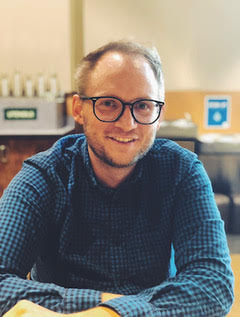“We wanted to play a 20-minute crazy solo. An extended, jammy outro used to be a pretty common thing, and now it feels completely dead”: Meet Dutch Interior, the SoCal indie-rock outfit channeling the Allman Brothers with six – yes, six – guitarists
Noah Kurtz and Connor Reeves of Dutch Interior on long-form songwriting and how six guitarists come together around one vision

Dutch Interior is a band. An indie-rock band, specifically. Indie in the sense that they make music for themselves, rock in the sense that they cut their teeth on classic rock riffs – and they have the chops to prove it.
“That is the tale of Dutch Interior, with every single member being each other’s oldest friend and having a connection through music,” says Noah Kurtz, one of six – yes, six – guitarists in the band. “We’ve had many iterations of the band; Dutch Interior was the culmination of all of that.”
Six guitarists might sound like a classic case of too many cooks in the kitchen, but for Dutch Interior, all that means is there’s a deep well from which to draw creations that will become songs.
“We’re all thinking like artists creating a record,” says guitarist Connor Reeves. “That makes collaborating a lot easier. We bring a song [or an idea] to the studio – a strip or a melody – and then we hear a vision for it. We’re all focused on achieving that vision.
“We’re not thinking about who’s playing guitar on this song, who’s playing bass, who’s playing drums. We’re just working on the song as a recorded version.”
Kurtz and Reeves have been playing music together since fourth grade, bonding over their shared knowledge of riffs and licks – just like musicians in the pre-YouTube era.
“I think I showed [Reeves] how to play Black Dog,” Kurtz says.
All the latest guitar news, interviews, lessons, reviews, deals and more, direct to your inbox!
“I can confirm that. I remember Noah was the Black Dog guy,” Reeves says.
“There’s no way I was playing the timing right on that shit,” Kurtz adds.
“For Dutch Interior, the songs are written by one person, then they’re brought to the group where they turn into something else,” Kurtz says. “All of our influences are similar; since we’re such old friends, our ideas come together like glue.”
“We’re a ‘record’ band,” Reeves says. “We all care most about the records we’re making before any of the other noise.”
“You hear that through all our projects, whether it’s the one recorded in our living room or this most recent one,” Kurtz adds.
This “most recent one” is Moneyball, the band’s third album. It opens with the warm crackle of a July campfire before the dueling solos on Sweet Time and the jangly, early Teenage Fanclub-inspired guitars on Fourth Street evoke an era of 20-minute jams and raw guitar tone.
“We wrote Sweet Time short, but we wanted to play a 20-minute crazy solo outro – dynamics, the whole shebang – live. That was the idea,” Kurtz says.
“I feel like an extended, jammy outro used to be a pretty common thing, and now it feels completely dead,” Reeves says. “I don’t know the last record I heard that had something like [Sweet Time] on it. So let’s do it – let’s sneak in a little Allman Brothers reference. I know a lot of people hate it, but I don’t really give a shit.”
For a band to bring a song like Sweet Time to life on a record – and Dutch Interior does exactly that – the secret ingredient is the tone that comes from the guitarists’ hands, not their pedalboards.
“I’d rather flip through pickups to find my tone and work with my amp with my hands,” Kurtz says.
“Being familiar with your guitar is the best thing you can do for your tone because tone starts in the hands,” Reeves adds. “That’s one of the biggest things for me – being so familiar with your instrument that when you pick it up and wrap your hand around it, there are no surprises.”
- Moneyball is out now via Fat Possum.
- This article first appeared in Guitar World. Subscribe and save.
Jacob Paul Nielsen is a music journalist whose work has appeared in Guitar World, Tape Op, Stereogum, Magnet, Ugly Things, and more. Since launching his blog Unstuck In Time in 2019, he’s interviewed people like Mike Matthews and Ken Lawrence, writing about everything from DIY pedals to obscure punk records. He lives in Detroit, Michigan, with his wife and dog, spending his free time running and hunting for old stereo equipment.
You must confirm your public display name before commenting
Please logout and then login again, you will then be prompted to enter your display name.



